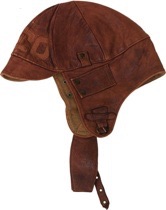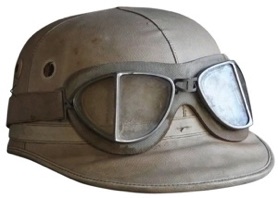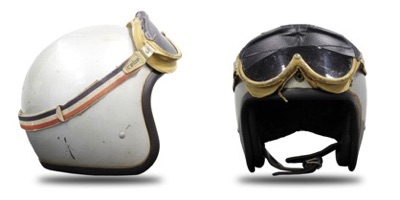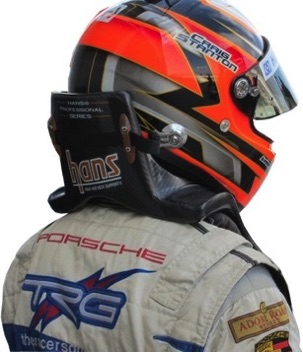Published in the March 2018 issue of “Die Porsche Kassette”
Ⓒ2018 Technolab / PedrosGarage.com

For more information on Helmets and more, please visit my weebsite:
www PedrosGarage.com.

One of my first Tech Articles, when I started writing, was “The Safety Helmet”. That was 9 years ago, and I think it’s time for an update.
The development of the safety helmet has been quite dramatic. The first racers (around the 1900s) wore leather caps mostly for protection from the wind, if anything else.


By 1912 a few were using inflatable rubber head covers derived from aeronautical use. From the 1920s through the 1950s protective helmets were made using compressed media, such as cork or paper and these slowly replaced the original leather contraptions.
By the late 1950s and early 60s, fiberglass helmets, also derived from aeronautical practice began appearing at major events such as the Indy 500.

These early fiberglass helmets incorporated cloth liners that were size-adjustable, similar to how construction hats are fitted. As time passed, polystyrene liners replaced the ones made of cloth. These were the first helmets that we could call safety helmets. From that point on, helmets provided increasingly better protection but also added weight. By the 1980s helmets were approaching the limit of what a racer might be reasonably expected to wear.
Fortunately for us now, advances in materials, in construction and in testing during the last 30 plus years have made safety helmets lighter, stiffer and much better at impact-absorption. They are also more comfortable to wear since the materials used for the interior (liners) have also greatly improved.

But the biggest change from the design standpoint has been the transition from open-face to full coverage. The vast majority of racers today use a full-face helmet.
The other major significant advance was the incorporation of frontal head restraints systems. This was the most significant advance in the last three decades. The system tethers the helmet to the driver’s upper torso, so in a frontal crash, the inertial load of the head and helmet combination is managed by the tethers, rather than by the driver’s neck muscles and cervical spine. By the beginning of this century, HANS (Head And Neck Support/System) devices started being required for pro racing. Today, just about every single form of racing, whether amateur or professional requires its use and every Snell-certified helmet must include hardware compatible with these tether systems, integrated into the helmet.

Consumer awareness has improved as well. Enthusiasts and racers alike understand what they are purchasing and why, and there’s no question that buyers are more educated and safety conscious than ever before.
In our original Tech Article from 9 years ago, we detailed the different standards that the Snell Foundation recommends for different applications. Snell still tests every helmet and those that meet their strict standards get their stamp of approval. Snell’s current competitive or SAtype standard is: SA2015. This is what the Foundation recommends for all levels of auto racing which is almost identical to the FIA 8859-2015 standard.

These standards are set much higher than the DOT (Department Of Transportation) standards, but there is even a higher standard than the SA2015. Snell’s Elite Standard EA2016 which is similar to, but more demanding than the FIA 8860-2010 standard. Helmets meeting these (Elite) standards provide more than 20% better impact protection than a Snell SA2015 helmet. Because of the exotic materials used, such as carbon fiber, these are complex and very expensive to manufacture. They are generally used by drivers at the highest levels of competition, such as Formula1, Indy Car and IMSA.

As carbon fiber and other super materials become more affordable, Snell’s EA test demands will be written into their SA standard and the EA designation will disappear.
Snell issues a new standard every five years and these standards are the most common helmet requirements for auto racing in the US. Most sanctioning bodies allow helmets meeting the two most recent Snell standards, i.e. SA2015 and SA 2010. NASCAR allows only the most recent Snell rating. The next Snell Foundation standard is due in 2020 and at that time the SA2010 will be deemed obsolete.
Looking into the future, we can expect to see more and better insulation to reduce decibel levels inside the helmet, lighter weight overall, increased air flow inside the helmet, better perspiration absorption and improvements in visor retention. Adding hearing protection to the helmet shell could greatly reduce the hearing loss so common in race car drivers as well as improve their performance by relieving some noise fatigue. Better air flow could also improve performance as well as it can reduce the dangers associated with overheating.
Some auto racing series and tracks allow racers to wear a minimum DOT or Snell M-rated motorcycle helmet. These helmets are not fire-retardant, they are not reinforced for head-and-neck restraints, and most importantly, they are not designed to withstand impact with a roll cage. Snell SA helmets are designed for auto racing, so that’s what a racer should wear. Tracks that allow motorcycle helmets think they are helping the racer save a few bucks, but they are putting the racer at risk.
Keep your chin strap tight, and ...
Happy Porsche'ing,

